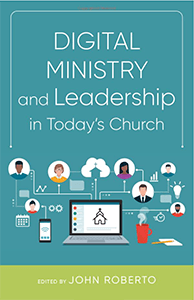Deanna Bartalini and Claudia McIvor say gathering people virtually is not that different than gathering in person. Both require intentionality, as well as a plan, a place or platform to help execute the plan, advertising, and engaging with the people who gather. They outline four key steps in developing a digital community strategy.
Technology is a means to an end. It is not the end itself. In the same way you would not show a video in person without a discussion afterward in a faith formation setting, you cannot do that in a virtual space. It’s not that you were able to make the technology work in delivering the video that is important; it is the conversation that helps people take what they have learned and use it on their faith journey.
Communities of faith have certain purposes in serving their members and potential members. These purposes can include teaching about the faith, praying together, supporting and/or participating in missionary work, and evangelization. In most cases, gathering together to engage in these activities is what it means to be a church. The word “community” implies the gathering together of people. Yet we can gather people virtually as well as in person. But how do we do that?
Technology and using online tools to build community can be daunting for sure. The first step in each step of the decision-making process is to pray. Prayer is always the beginning of moving forward in creating community in virtual spaces, and so a plan is necessary. It will help you lay a good foundation and framework and provide the structure needed to move forward.
1. Determine purpose and audience.
What does your church want to accomplish? Does your community truly need this type of virtual gathering place? What aspects of discipleship are you trying to support in this community — evangelization, prayer, worship, witness, study, service, or stewardship? Do you want to sustain existing relationships or create spaces for new ones? Are you interested in starting small Christian groups within your larger faith community?
Who is your audience? Do you want to focus on a specific age demographic? And who will interact with people in the virtual space — ministry leaders, small groups, committees, faith formation, Bible study, or social groups?
2. Create a plan.
Find out if there are guidelines in place from your church leadership, such as media release forms or a social media policy. Then, form an implementation team and assess your resources.
- What web tools or technology will you use?
- What is your budget? Will your church underwrite your equipment needs?
- Who will be responsible for learning how to use it? To implement it? To monitor it? It is always a good practice to have more than one person know the basics of using a web tool including username, passwords, and basic functions of a program or tool.
- How will you communicate what you are doing to the group you are targeting?
- How will you plan advertising and a way to sign up/opt in?
- What kinds of publicity materials do you need? Consider your branding, graphics, logo, links to online resources already on your website, etc.
- How will you register people and what registration materials do you need?
Schedule the rollout of your plan. Include time for practice with a small group before going out to the whole group. Decide on how and when you will assess the effectiveness of your plan.
3. Implement the plan.
Set the start date, advertise, and begin sign-ups. Provide easy, personal, and ongoing training to participants in using the technology or web tool as needed. When you go live, offer support to leaders and participants when using new technology.
4. Assess periodically.
Assess the technology/web tool as well as people’s response to it and then fine-tune the plan. Should you go deeper into this program or add something new? As you evaluate the project consider how you will measure success. Increased collections? Satisfaction surveys? New ministries in the church community? Increased participation?
The online mission field of the modern church
Community discipleship in virtual spaces is an essential part of the twenty-first-century church. It is, in fact, a mission field of the modern church. More people are connected to technology than have met Jesus, and we must be committed to sharing the Good News with them. More people are online than will ever walk into the doors of your church, and we must meet them where they are with the Good News. We must be willing and trained to accompany them in healthy and godly relationships online.
Being a part of the digital world is not much different than Paul in his travels in the first century. Like Paul, who used letters to keep in touch with the churches he founded, we can use technology to stay in touch with our church. We can reach out to those who are lost or afraid or need to hear a good word. If we do not engage with people using technology, we risk becoming irrelevant. Without an online presence, we are not viable in the twenty-first century. With an online presence that is rich with disciples engaging in prayer, worship, evangelization, service, and the love of God, our church will have a vibrant online presence today.
 Excerpted from “Community and Relationship Building in Virtual Spaces” by Deanna Bartalini and Claudia McIvor in Digital Ministry and Leadership in Today’s Church (Liturgical Press, 2021) edited by John Roberto. Used by permission. The book is available at Liturgical Press, Cokesbury, and Amazon.
Excerpted from “Community and Relationship Building in Virtual Spaces” by Deanna Bartalini and Claudia McIvor in Digital Ministry and Leadership in Today’s Church (Liturgical Press, 2021) edited by John Roberto. Used by permission. The book is available at Liturgical Press, Cokesbury, and Amazon.
Related Resources
- 6 Traits People Value in Online Faith Communities by Heidi A. Campbell
- 4 Audiences for Digital Engagement by Jessica L. Anschutz
- 5 Signs You’re Doing Online Ministry Right by Carey Nieuwhof
Image by Freepik






